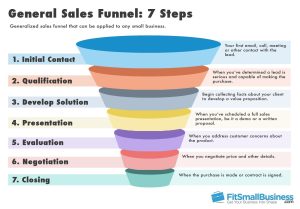
In the fast-paced and competitive world of technology, having a well-thought-out pricing strategy is crucial for success. A pricing strategy determines the value your product or service holds in the market, and it directly influences your profitability, sales volume, and customer acquisition and retention rates.
Setting the Right Price: Finding the Balance
One of the most critical aspects of developing a pricing strategy is finding the right balance between maximizing profit and attracting customers. Pricing too high may result in limited sales volume and potential customers turning away due to cost concerns. Conversely, pricing too low may diminish the perceived value of your product and profitability in the long run. Striking the right balance requires thorough market research and a deep understanding of your target audience.
Market Research: Understanding Customer Expectations
Before determining your pricing strategy, conducting thorough market research is paramount. This research will provide insights into your competitors’ pricing, as well as the needs, preferences, and purchasing power of your target audience.
Understanding customer expectations helps you position your product correctly in the market. By identifying the unique selling points and benefits your product brings to customers, you can more effectively communicate its value – and justify its price – to potential buyers.
Segmentation and Pricing Tiers
Segmenting your customer base allows you to tailor your pricing strategy according to different consumer segments. You can create pricing tiers based on factors such as customer type, usage level, or additional features offered. This approach allows you to target different customer segments and optimize revenue generation.
For instance, tech companies often offer different versions of their software or hardware with varying features and prices. This strategy caters to different customer segments while maximizing profitability. It also helps foster loyalty by providing different options for customers with varying needs and budgets.
Psychological Pricing: The Power of Perception
Psychological pricing is a tactic often used by tech companies to influence consumer behavior and perception of value. Certain price points, such as $9.99 instead of $10, create the illusion of a more affordable price, driving more sales.
Another effective technique is anchoring, which involves presenting a higher-priced option alongside a cheaper one, making the latter appear more attractive and reasonable. These psychological triggers can significantly impact customers’ decision-making processes and boost your sales.
The Role of Discounts and Promotions
Discounts and promotional offers can play a vital role in a tech company’s pricing strategy. Time-limited discounts, bundle offers, or seasonal promotions can create a sense of urgency and encourage customers to make a purchase sooner rather than later.
However, it’s essential to strike a balance with discounts to avoid devaluing your product or training customers to wait for future promotions. Carefully analyze the potential impact of discounts on your profitability and consider if they align with your long-term business goals.
Reassessing and Adapting: The Continuous Process
A well-thought-out pricing strategy is not a one-time decision, but an ongoing process. As the market dynamics change, it’s crucial to reassess and adapt your pricing strategy accordingly. Keep a constant pulse on customer feedback, market trends, and competitor pricing to stay ahead.
Regularly reviewing your pricing strategy helps identify areas for improvement. You can optimize your pricing tiers, explore new product bundling options, or introduce loyalty programs to enhance customer satisfaction and encourage repeat purchases.
Conclusion
A well-thought-out pricing strategy is fundamental to success in the technology industry. It aligns your product’s value with customer expectations, positions you competitively in the market, and maximizes profitability. Conducting thorough market research, segmentation, and utilizing psychological pricing techniques are just some of the key factors in developing a successful pricing strategy. Remember, pricing is not set in stone – adaptability and continuous evaluation are essential in staying ahead of the competition and ensuring long-term growth.

